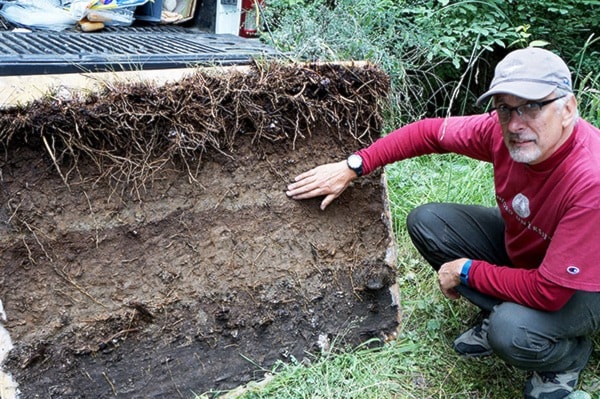Representatives from Natural Resources Canada (NRCan) were in Port Alberni digging for new research to be better prepared for an earthquake and tsunami.
Dr. Peter Bobrowsky, PhD, Pgeo, Natural Resources Canada, and hired drillers were near the Port Alberni sewage lagoon on Friday, June 24 and Saturday, June 25 digging approximately three-metre deep holes in hopes to find geological evidence from dozens of tsunamis that date back thousands of years.
Similar research was done 20 years ago but Bobrowsky said now with updated techniques and technology, more advanced studies are being done.
“We now look at geochemistry, so that’s something new we’re doing... these are things we didn’t do 20 years ago so that’s why we came back,” he said.
This study is a part of a large project that NRCan and the Geological Survey of Canada are undertaking on the entire west coast to find evidence on paleotsunamis.
A paleotsunami is a tsunami that occurred prior to the historical record or that has no written observations. Research is based primarily on the mapping and dating of tsunami deposits found in coastal areas.
“We’re collecting for risk assessment. The more information we know about how big the events are, how frequently they occur, what their impact is, that’s earthquake preparedness for everybody, Bobrowsky said. “It’s not good enough to just say the big one’s coming, which we know, we want to know how’s Port Alberni going to be different from Tofino, Victoria, etcetera.”
Last year, Bobrowsky was in Tofino where he and a team collected a sheet-like layer of soil, called a soil monolith, that takes paleosol layers from below ground topped by tsunami deposits.
The soil monolith illustrates tsunamis hitting the region and can be identified by a band of grayish clay or a dark layer amidst the soil called tsunami sediments or tsunami deposits.
By sending pieces of wood collected from the soil monolith for radio carbon testing, the date can be determined of approximately what year an earthquake hit.
Two soil monolith peels were taken from Port Alberni that will be tested. One of which will eventually be on display for the public somewhere in the Valley.
karly.blats@albernivalleynews.com
facebook.com/albernivalleynews
